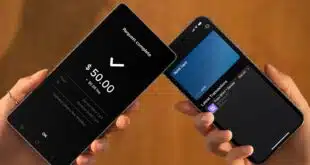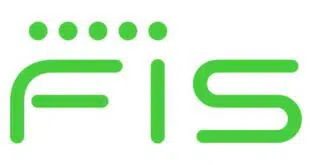Merchant processor First Data Corp. bolstered its position as an up-and-coming provider of point-of-sale payment terminals today with the unveiling of one new and one retrofitted terminal in its FD line of hardware. The devices will help First Data shore up its offerings to check-accepting and multimerchant card-accepting locations. In the bigger picture, they could make it harder for First Data merchants to switch acquirers and may also ratchet up the competitive pressure on major POS hardware manufacturers. The offerings announced today are the FD-200 and the FD-300. Greenwood Village, Colo.-based First Data says the FD-200 is an-all-in-one solution for merchants who accept a lot of checks but also take credit and debit cards as well as other payment forms such as electronic benefits transfer (EBT) payments. “The FD-200 is sort of the next-generation of our Eclipse [check-reading] terminal,” Chuck Chagas, First Data vice president of product and business development, tells Digital Transactions News, noting that the Eclipse is at least 8 years old. “The platform is changed completely.” Besides a magnetic-stripe card reader, the device has a built-in check imager and reader that captures the check's magnetic ink character recognition (MICR) line containing bank-routing and account information. As such, it is intended to support services from First Data's TeleCheck subsidiary, including Electronic Check Acceptance, or ECA. That product is TeleCheck's proprietary spin on the automated clearing house's point-of-purchase (POP) e-check code in which the store clerk has the POS device read the customer's check and then returns the voided check to the customer. The terminal also has Internet Protocol connectivity, 32-bit processing, and dual, built-in printers?a thermal printer for receipts and an inkjet printer for printing on voided checks. The FD-300 announced today, meanwhile, is an updated version of the POS terminal of the same name introduced not long after First Data launched the FD-100 for the small-merchant market, the first in the FD line (Digital Transactions News, Oct. 23, 2006). The main difference is not the hardware, but the software, according to Chagas. The first iteration wasn't a big seller, he says. By using new programming, First Data is pitching the FD-300 to businesses that have more than one merchant account but want just one terminal. These include medical clinics where each doctor has a separate merchant account, or nail salons and similar businesses where each specialist using the premises is an independent contractor. Each terminal can support up to 99 separate account identifiers, Chagas says. Some medical clinics have separate terminals for each doctor, according to Chagas. “We believe this is a niche market in need of a very good solution,” he says. “They can share the cost of the device, and it's a cleaner operation for the office manager.” Other targets for the FD-300 are single businesses with separate merchant accounts for their physical and card-not-present orders. First Data wouldn't discuss the terminals' pricing, saying prices can vary based on distribution channel and volume. Chagas says First Data now has “hundreds of thousands” of FD devices deployed, but won't disclose an exact number. A Taiwanese contract manufacturer makes the FD devices for First Data. He says First Data “absolutely” will continue to offer products from the independent POS hardware suppliers such as VeriFone Holdings Inc., Hypercom Corp., and Ingenico. “We're offering merchants a choice,” he says. “We think of the FD lines as an addition to, not taking away from anyone else.” That addition, however, gives First Data a couple of distinct advantages besides a new revenue stream from hardware sales, according to processing consultant Adil Moussa of Boston-based Aite Group LLC. One is merchant retention. Businesses changing acquirers often keep their old terminals and simply get them reprogrammed to work on the new acquirer's platform, whereas the FD devices are designed for First Data platforms, Moussa says. That could make First Data merchants think twice before changing acquirers because they'd have to get a new terminal. “It's an additional hurdle,” he says. A second, more intangible but psychological advantage is having the First Data brand on the terminal to reinforce the merchant-processor relationship. “They are the only acquirer with a POS device with its name,” he says. In other news related to point-of-sale devices, San Jose, Calif.-based VeriFone on Monday introduced a large-display terminal called the MX880. The device combines a tactile keypad with the largest full-motion color display and most powerful processor in the MX retail product line, VeriFone said. VeriFone unveiled the terminal at the National Retail Federation's annual conference in New York.
Check Also
Despite BNPL’s Popularity, Consumers Are Encountering Problems
Nearly one quarter of consumers tend to spend more than they should when taking out …





